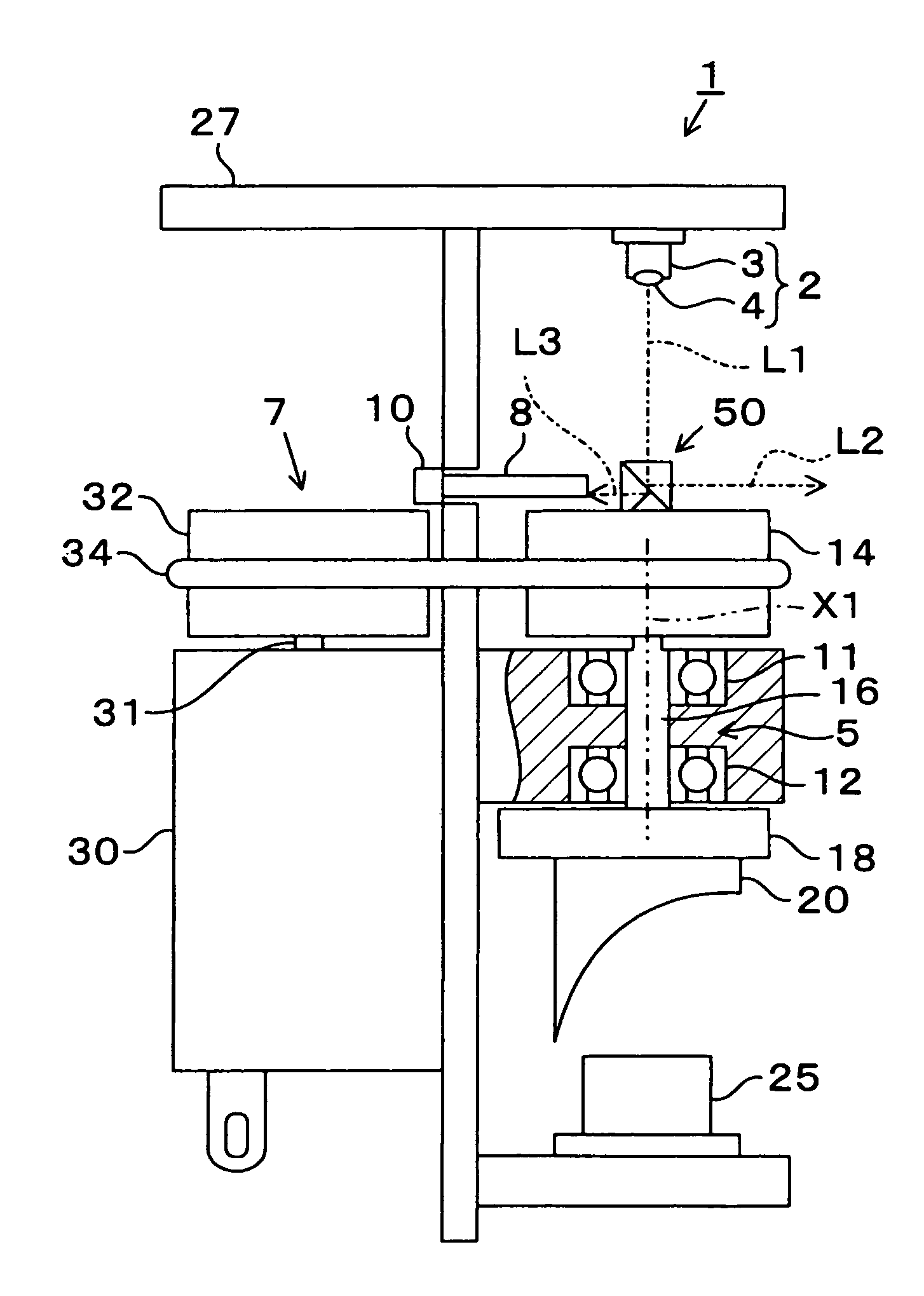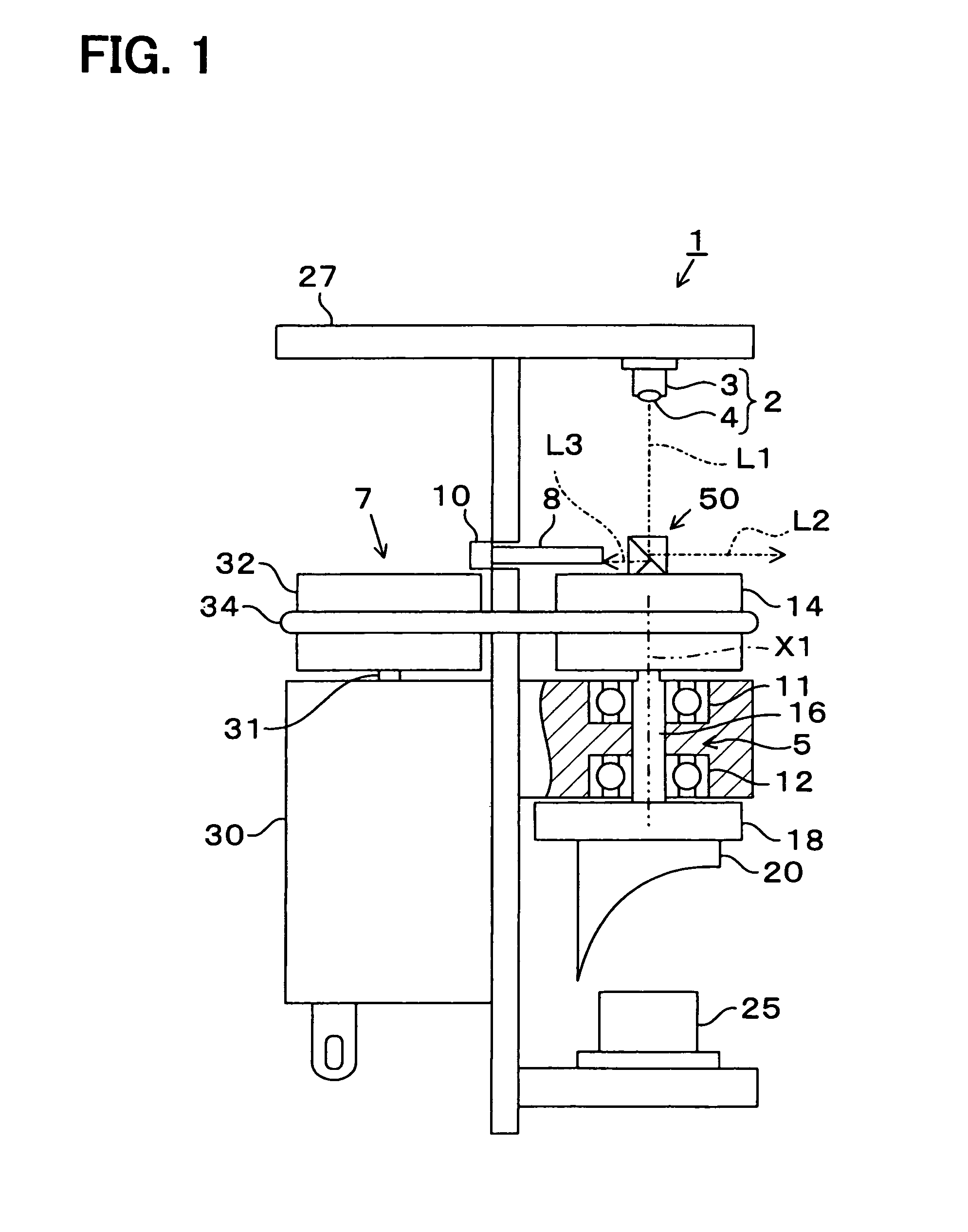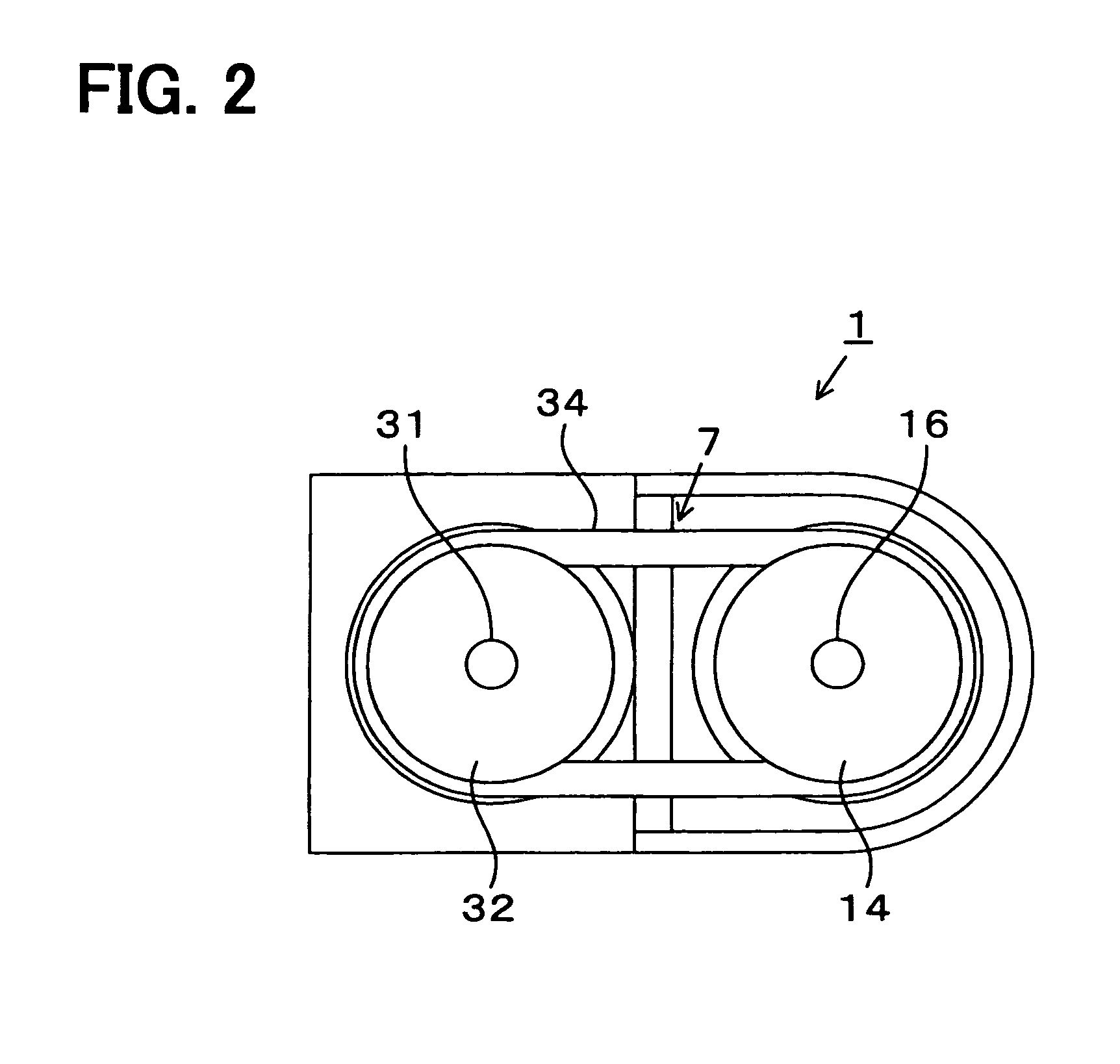Location detection apparatus
a technology of location detection and detection apparatus, which is applied in the direction of active open surveying means, instruments, measurement devices, etc., can solve the problems of increasing the size of the resolver and the rotary encoder and so as to achieve the effect of reducing the size and weight, reducing the size of the range sensor
- Summary
- Abstract
- Description
- Claims
- Application Information
AI Technical Summary
Benefits of technology
Problems solved by technology
Method used
Image
Examples
first embodiment
[0022]A first embodiment is described below. FIG. 1 illustrates a location detection apparatus according to the first embodiment. FIG. 2 illustrates a transmission mechanism of a location detection apparatus. FIG. 3 illustrates a beam splitter of a location detection apparatus and illustrates lights spited by the beam splitter. FIG. 4 illustrates the beam splitter that is rotated 180 degrees from the rotational position of the beam splitter 50 illustrate in FIG. 3.
[0023]As shown in FIG. 1, the location detection apparatus 1 according to the present embodiment includes a light source 2 and a beam splitter 50. The light source 2 outputs light L1 for detection. The beam splitter 50 has a reflecting surface 51a (see FIG. 3) for reflecting a part the light L1 from the light source 2 to a space. The light source 2 includes a laser diode 3 and a collective lens 4 for collecting a laser beam outputted from the laser diode 3. As the light L1 for detection, the collective lens 4 outputs the l...
second embodiment
[0051]A second embodiment is described below.
[0052]FIG. 5 illustrates a location detection apparatus 200 according to the second embodiment. The second embodiment is different from the first embodiment in that, in the second embodiment, a rotary encoder is attached to a drive axis 31 of a motor 30.
[0053]As shown in FIG. 5, the location detection apparatus 200 includes a circular plate 201. The circular plate 201 is attached to the drive axis 31 of the motor 30 and is rotatable integrally with the drive axis 31. The circular plate 201 may be a slit circular plate, which is used in a known rotary-encoder and has slits along an outer circumference thereof, wherein the splits are formed at predetermined intervals, for example, at 4 degrees angular intervals. A light output element and a light reception element (not shown) are disposed around the circular plate 201 to detect the slits. The rotary encoder of the location detection apparatus 200 includes the circular plate 201, the light o...
third embodiment
[0056]A third embodiment is described below.
[0057]FIG. 6 illustrates a location detection apparatus 300 according to the third embodiment. A location detection apparatus of the third embodiment is different from that of the first embodiment in that, for example, the beam splitter 50 is replaced with a mirror 60. Like parts are referred by using like reference numerals between the first and third embodiments.
[0058]The location detection apparatus 300 includes the mirror 60, which is an example as a light output side reflector functioning as light outputs side reflecting means. A reflecting surface 60a of the mirror 60 is inclined at an angle of 45 degrees with respect to the rotation axis X1. In other words, an angle between the reflecting surface 60a and the optical axis of the light L1 is 45 degrees. The mirror 60 reflects the light L1 incident thereon so that a sum of an angle of incident and an angle of reflection is 90 degrees. Wherever the rotational position of the mirror 60 i...
PUM
 Login to View More
Login to View More Abstract
Description
Claims
Application Information
 Login to View More
Login to View More - R&D
- Intellectual Property
- Life Sciences
- Materials
- Tech Scout
- Unparalleled Data Quality
- Higher Quality Content
- 60% Fewer Hallucinations
Browse by: Latest US Patents, China's latest patents, Technical Efficacy Thesaurus, Application Domain, Technology Topic, Popular Technical Reports.
© 2025 PatSnap. All rights reserved.Legal|Privacy policy|Modern Slavery Act Transparency Statement|Sitemap|About US| Contact US: help@patsnap.com



